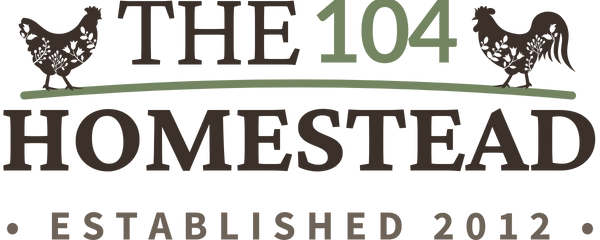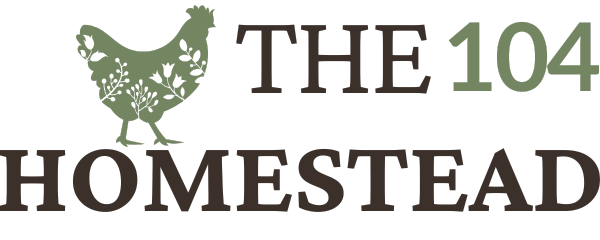How to Raise Guinea Fowl Made Simple for Any Homestead
Learn how to raise guinea fowl successfully with this step-by-step guide. Tips on housing, feeding, training, and caring for your flock.
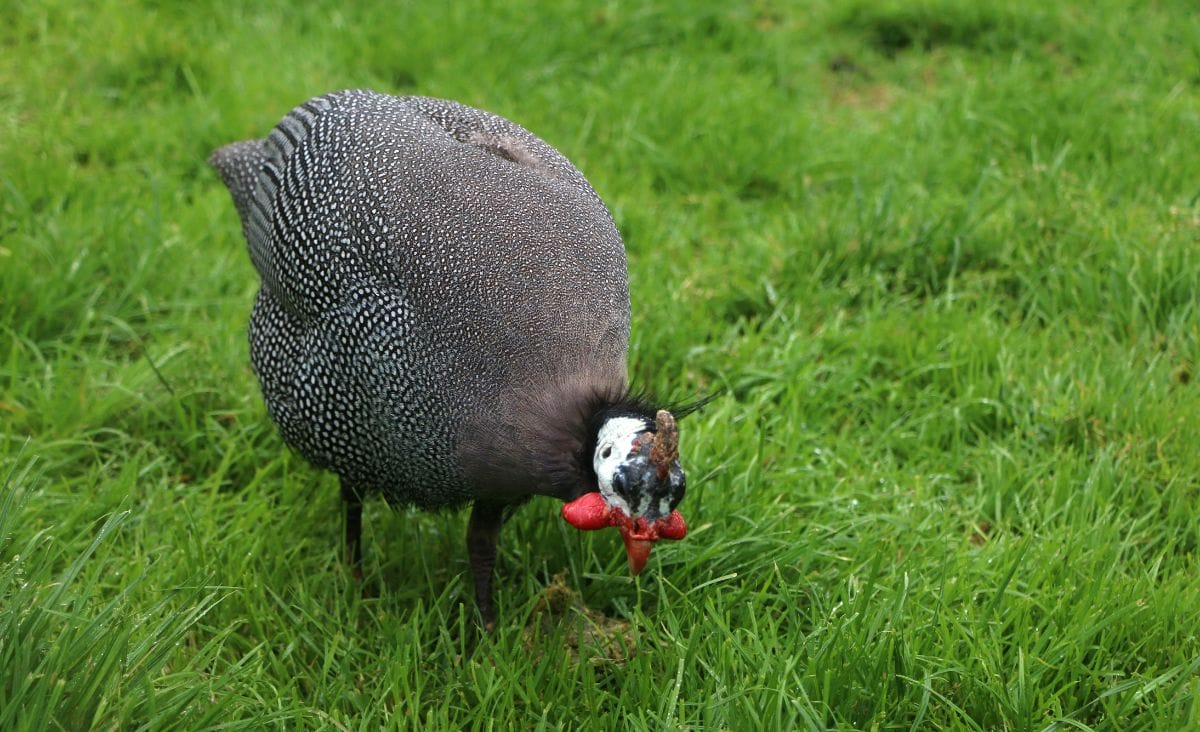
Guinea fowl are fascinating and useful additions to any homestead, offering excellent pest control and a bit of extra security. But knowing how to raise guinea fowl successfully requires understanding their unique needs and habits. If you’re thinking about adding guinea fowl to your property, this guide will walk you through everything you need to know.
Curious about why guinea fowl might be the right choice for you? Check out my post that dives into the benefits of raising these unique birds. Now, let’s focus on the practical steps to raising guinea fowl and setting them up for success.
Getting Started: What You Need to Know
Before bringing guinea fowl home, it’s important to prepare properly to ensure their health and happiness.
Choosing Your Guinea Fowl
Starting with keets, or baby guinea fowl, is the most common approach to raising these unique birds. Keets are relatively affordable, easy to purchase, and they adapt more readily to your property since they imprint on their surroundings as they grow. This makes them more likely to stay close to home, which is a significant advantage given guinea fowl’s natural tendency to roam. Raising keets also allows you to bond with them from an early age, which can make them easier to handle and slightly more approachable as adults.
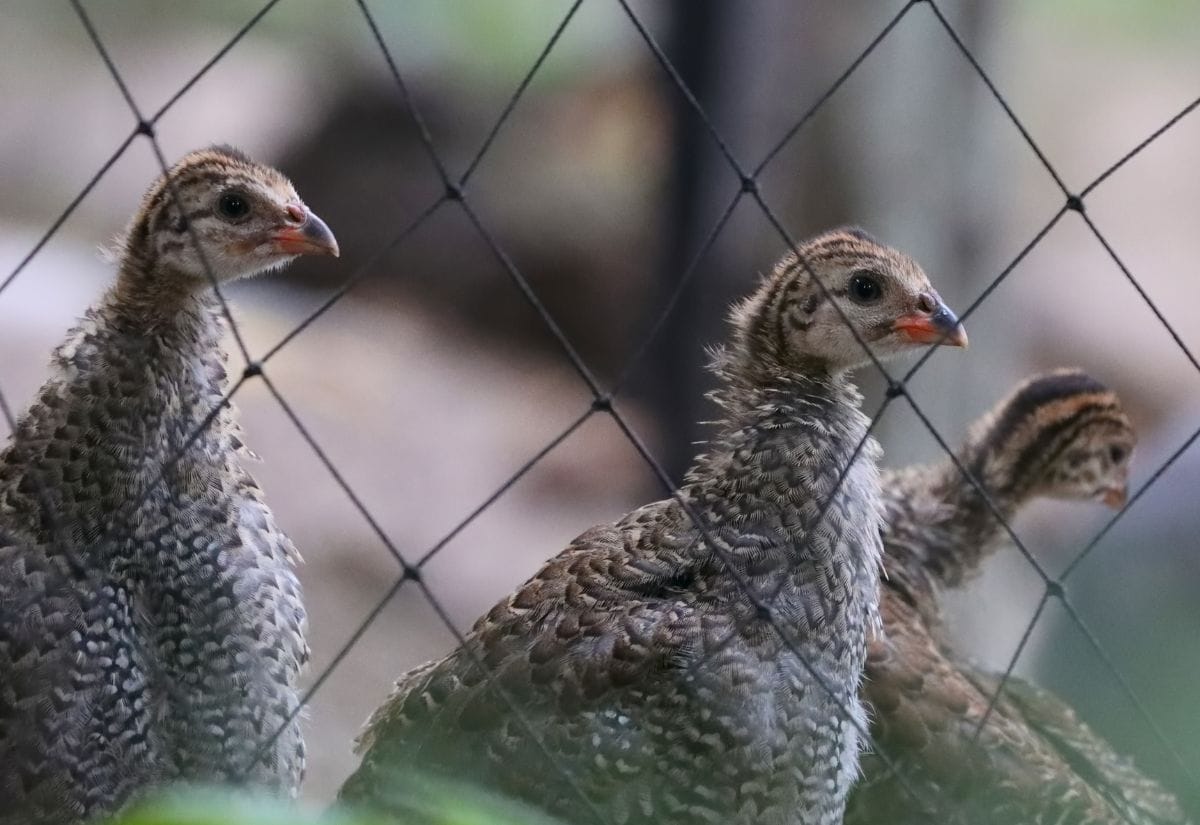
Alternatively, you can start with adult guinea fowl, but this option comes with challenges. Adult birds often take longer to adjust to a new environment and are more likely to attempt to return to their previous home or simply wander away. They are highly territorial and may resist forming a connection with their new surroundings or your existing flock. If you do choose to purchase adults, you’ll need to confine them for an extended period, often several weeks, to help them acclimate to their new home.
Pro Tip: If you’re a beginner, starting with keets is the easiest and most rewarding path.
Setting Up Housing
Guinea fowl need secure housing that accommodates their unique behaviors:
Coop or Shelter
A basic coop with secure roosting bars is essential for housing guinea fowl, especially at night when predators are most active. The coop should include predator-proof features, such as strong latches, hardware cloth over windows, and a solid floor or buried fencing to prevent digging. While guinea fowl are hardy birds, providing them with a safe, weather-resistant shelter will keep them healthy and reduce losses due to predators or harsh conditions.
Space Requirements
Guinea fowl need at least 2–3 square feet of space per bird in the coop to ensure they have enough room to move around without stress or injury. Overcrowding can lead to aggression and health issues, so it’s important to size your coop appropriately. If you plan to free-range your guinea fowl, ensure they have access to ample outdoor space where they can forage and explore, as they are highly active and thrive with room to roam.
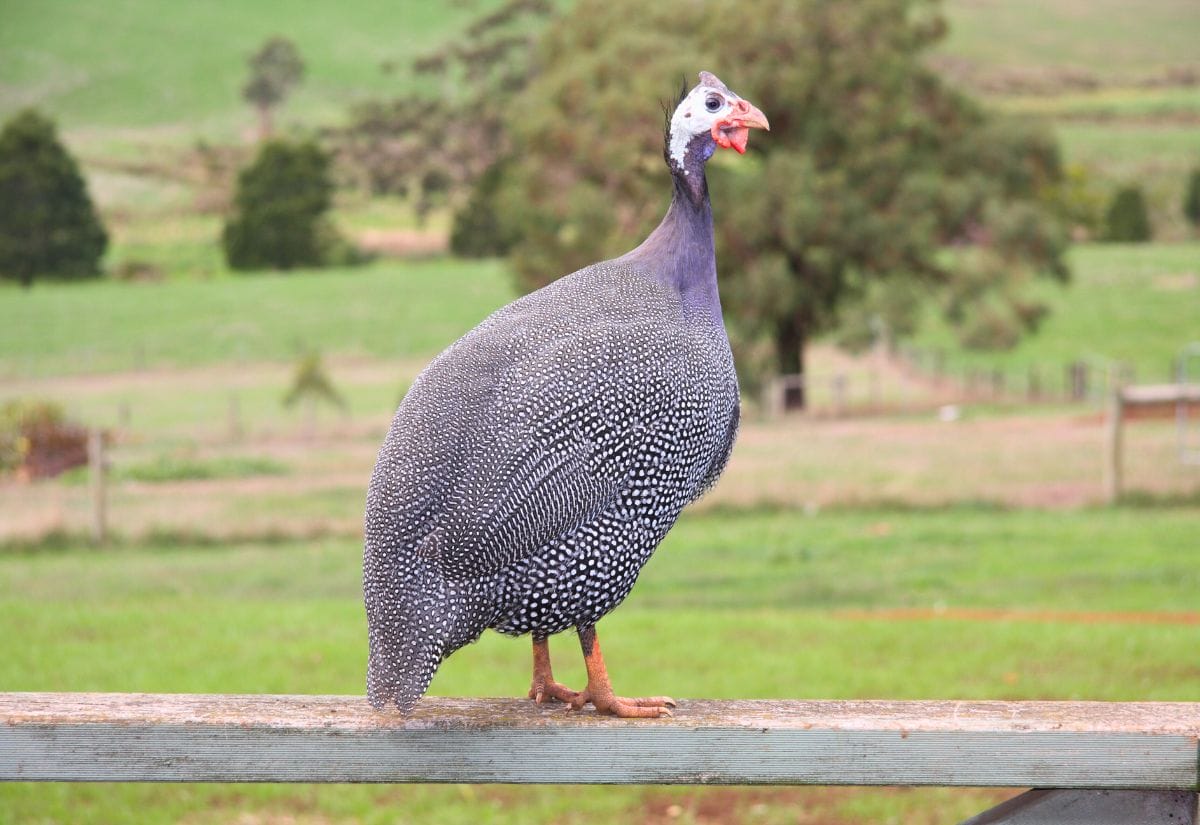
If you have neighbors anywhere nearby, your guineas WILL go visiting if they are allowed to free-range.
Training for Roosting at Home
To encourage guinea fowl to return to the coop at night, confine them to the coop for 4–6 weeks when they first arrive. This confinement period helps them establish the coop as their home base, reducing the likelihood that they will wander off to roost in trees or other unsafe areas. Skipping this step can make it much harder to manage your flock and increases their risk of predation.
Feeding Guinea Fowl
- Keet Starter Feed: Use a high-protein starter feed (24–28%) to support healthy growth.
- Adult Feed: Offer gamebird feed. Guinea fowl are excellent foragers, so they’ll supplement their diet with what they find outdoors.
- Supplements: Provide grit and calcium to aid digestion and egg production.
Caring for Keets
Keets require specific care during the first few weeks of their lives:
- Brooder Setup: Use a warm, draft-free brooder with a heat lamp or brooder plate, just like you would with chicken chicks. Maintain the temperature at 95°F for the first week, then decrease it by 5°F each week.
- Bedding: Line the brooder with absorbent materials like pine shavings, cleaned regularly. Make sure the surface isn’t slippery or your keets may develop spraddle leg.
- Water and Feed: Provide shallow water dishes to prevent drowning, and make sure they always have access to fresh feed.
Tip: Handle keets regularly to help them grow accustomed to human interaction, making them easier to manage as adults. This doesn’t guarantee they won’t freak out every time they see you, but it helps.
Managing Free-Range Guinea Fowl
Guinea fowl thrive when allowed to roam, but they need guidance to stay safe and close to home:
Free-Range Benefits
Guinea fowl are exceptional foragers, spending their days scouring your property for ticks, insects, and even weed seeds, making them a natural pest control solution. Their diet includes harmful garden pests like beetles, grasshoppers, and even snakes, which helps maintain a healthier outdoor environment. Unlike chickens, guinea fowl rarely scratch up gardens, making them ideal for protecting both your yard and crops. With their constant foraging, they can significantly reduce pest populations while contributing to a balanced ecosystem.
Training for Free-Ranging
Training guinea fowl to return to the coop at night is an essential step for their safety and your convenience. Begin by keeping them confined to the coop for 4–6 weeks so they learn to recognize it as their home base. During this time, ensure they have comfortable roosting spaces and access to food and water inside the coop.
After the initial confinement, start letting them out in the mornings for a few hours, gradually increasing the time they spend outside each day. In the evenings, guide them back to the coop using a combination of food rewards, gentle herding, or even calling them with a specific sound they’ll associate with feeding time.
Patience is key, as guinea fowl can be stubborn, but consistent routines will help them learn to return to the coop on their own.
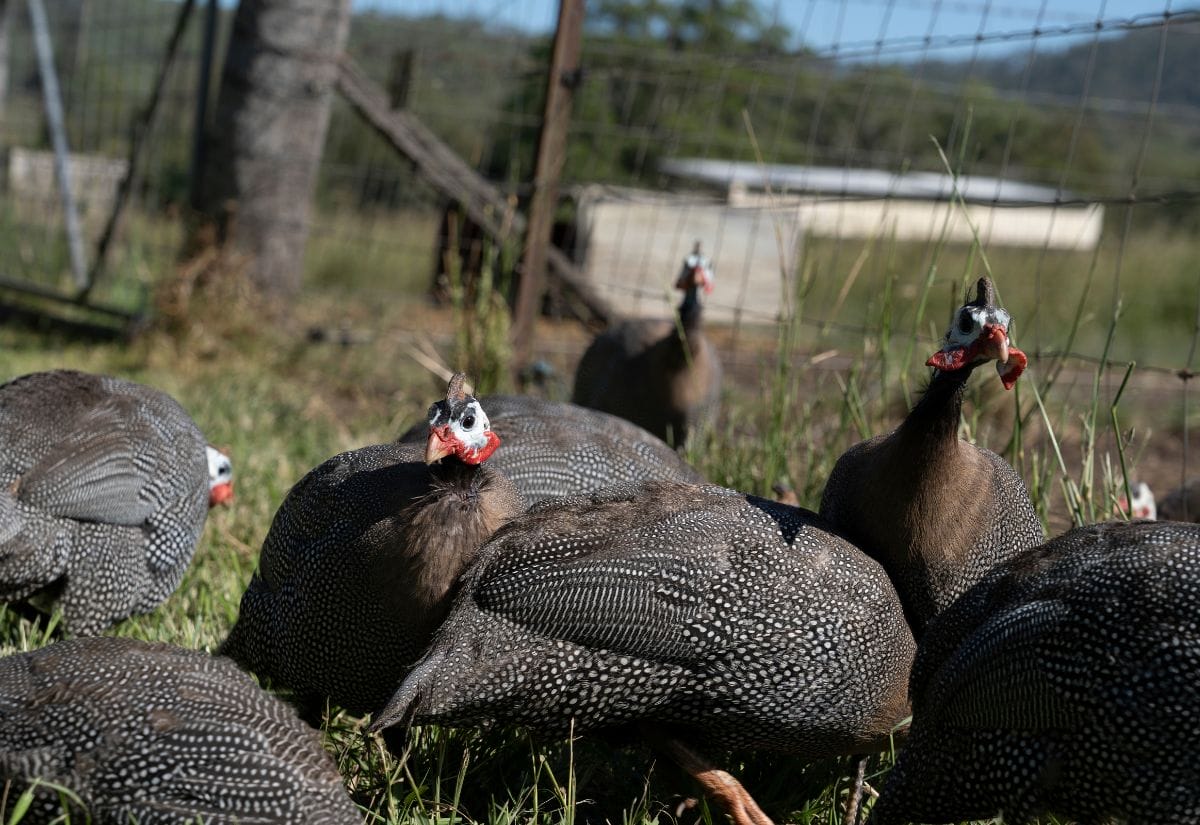
Pen Requirements
If free-ranging guineas won’t work for you, you’ll need a pen that is specifically designed to meet their needs while keeping them safe.
Guinea fowl are strong flyers and can easily clear standard fencing, so your pen will require a fully enclosed top made from durable materials like hardware cloth or poultry netting. The sides of the pen should be at least 6 feet high to provide enough headroom and discourage escape attempts. Use sturdy, predator-proof materials for the fencing and secure the bottom of the enclosure to prevent predators from digging underneath.
Inside the pen, provide ample space for your guineas to move around comfortably. Aim for at least 10 square feet per bird to reduce stress and allow for natural behaviors like foraging and dust bathing. Include features like roosting bars, sheltered areas for protection from weather, and access to fresh food and water. Adding ground cover plants or loose straw can simulate a more natural environment, encouraging their active foraging instincts even within a confined space.
With a well-designed pen, you can keep your guinea fowl happy and healthy even if free-ranging isn’t an option.
Common Challenges When Raising Guinea Fowl
While guinea fowl are low-maintenance, there are some unique challenges to be aware of:
- Noise: Guinea fowl are naturally loud and will alert you to intruders, but their calls may be disruptive in quieter neighborhoods.
- Flightiness: They are less domesticated than chickens, making them more independent and harder to tame.
- Finding Eggs: Guinea hens often lay their eggs in hidden nests, making collection a daily treasure hunt.
- Predators: Guinea fowl are vulnerable to predators, especially hawks and foxes. Keep their coop secure and provide protective measures if free-ranging.
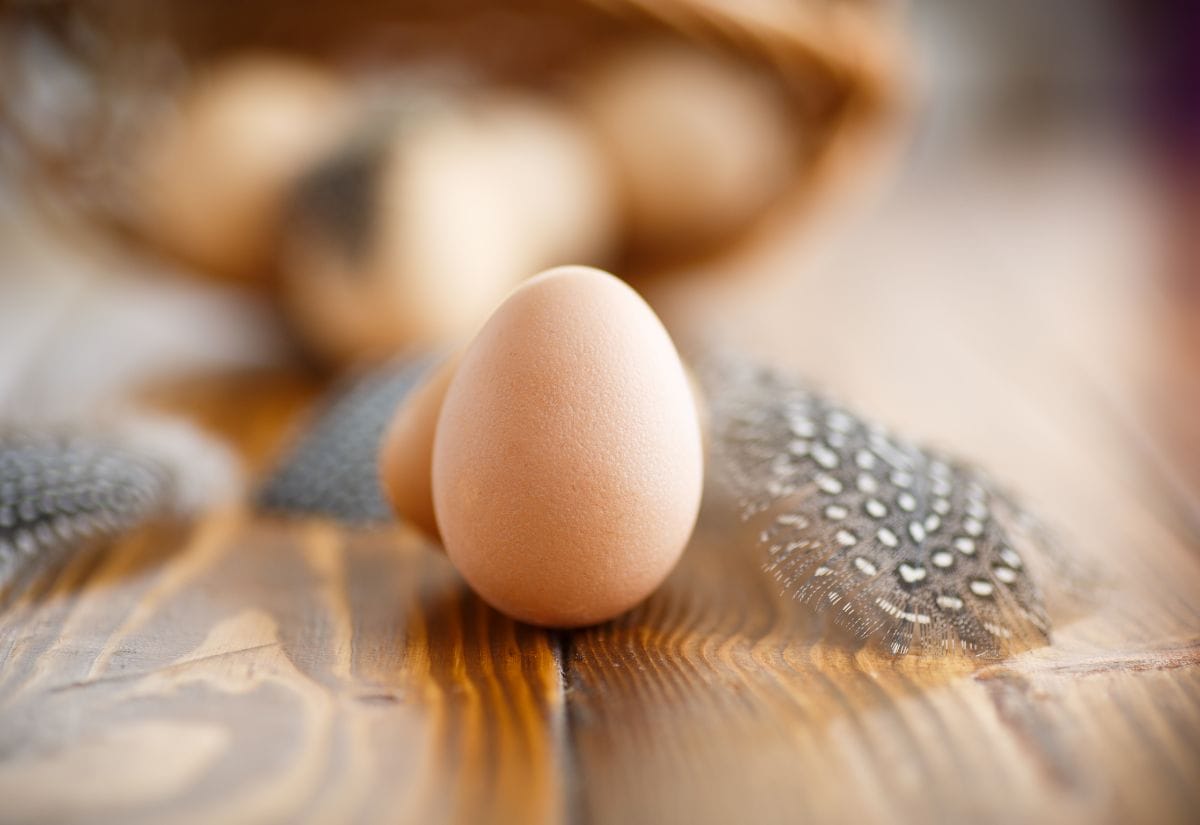
Your Questions About How to Raise Guinea Fowl Answered
Want to raise guinea fowl on your homestead? Pin this for step-by-step guidance!
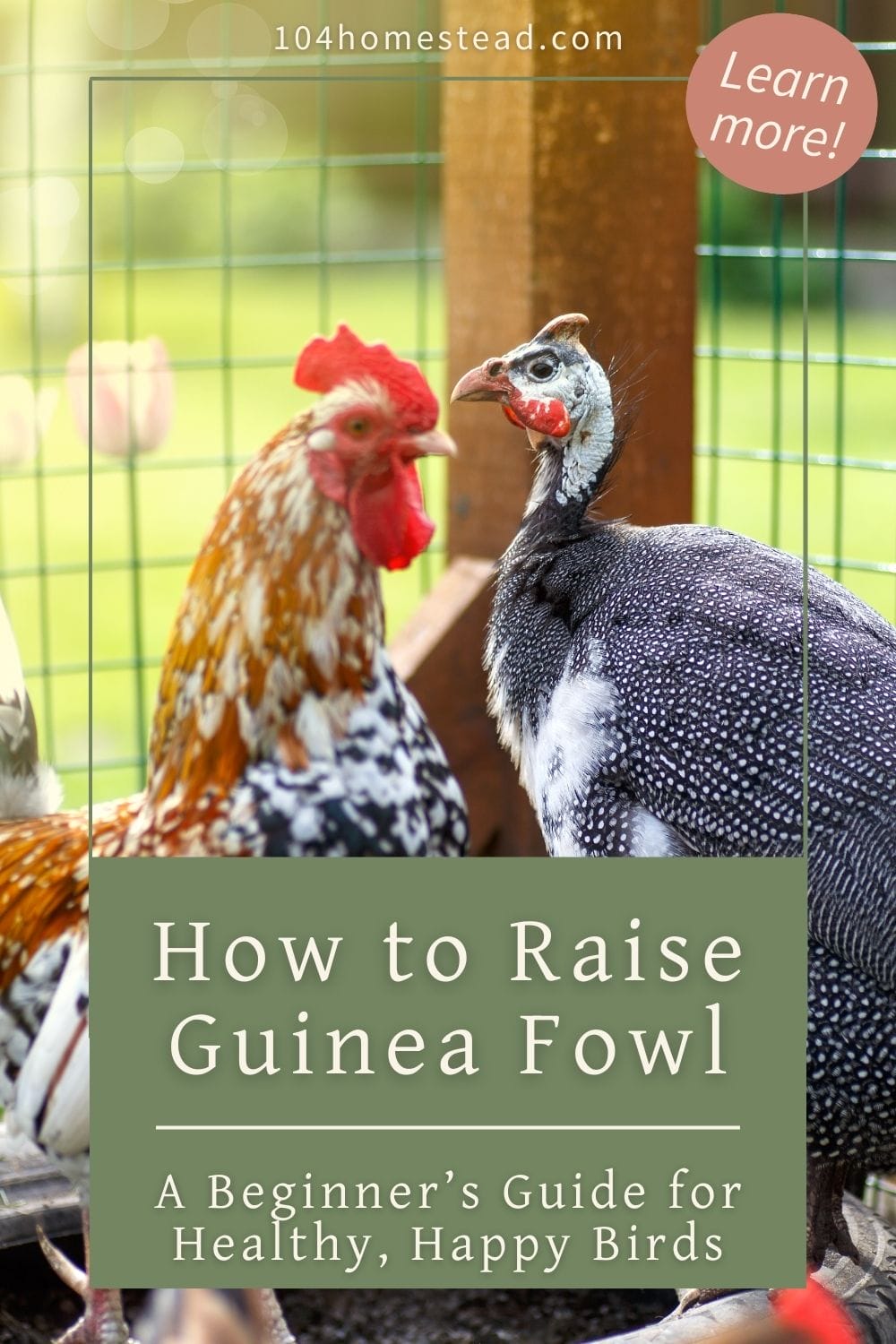
Raising guinea fowl is a rewarding experience that brings pest control, security, and a lively dynamic to your homestead. With the right preparation, housing, and training, you’ll enjoy the benefits of these unique birds while overcoming the challenges they bring.
Keeping guinea fowl safe and healthy shares many similarities with raising chickens, so resources designed for chicken care can also apply to your guineas. Protecting them from predators is essential, and understanding how to secure their housing and outdoor areas can make all the difference. During winter, ensuring their water doesn’t freeze is another critical task for their well-being. If you’re building or improving a coop, consider features that work well for both chickens and guinea fowl. And if you’re curious about incorporating plants into their environment, there are plenty of safe options to enhance their space. These tips will help you provide the best care for your flock.
Have you raised guinea fowl before, or are you planning to add them to your homestead? Share your experiences or questions in the comments—I’d love to hear from you!
